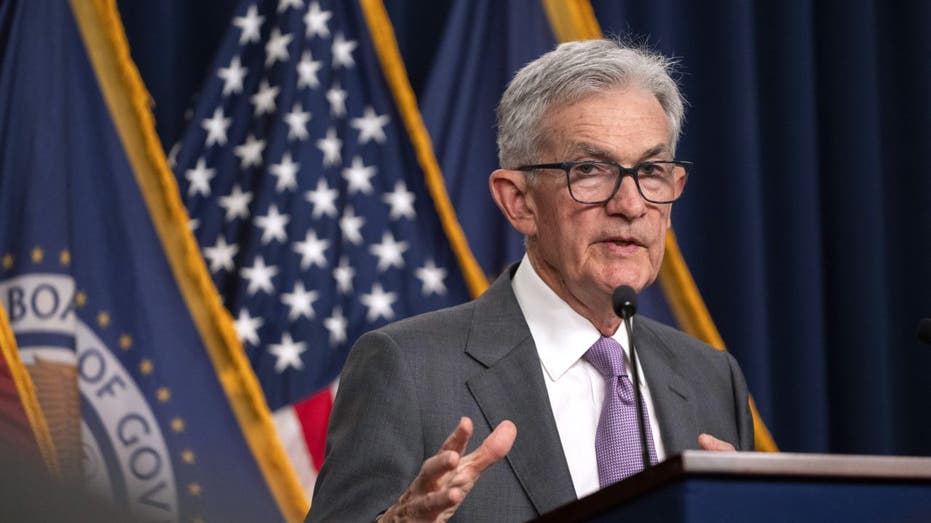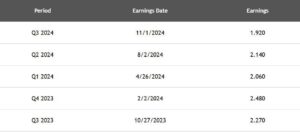An inflation gauge closely watched by Federal Reserve policymakers continued to slow in August as the pace of price growth trended closer to the Fed’s target.
The Commerce Department reported Friday that the personal consumption expenditures (PCE) price index rose 0.1% from the prior month and 2.2% year over year. The annual figure came in cooler than the estimates of economists polled by LSEG.
Core PCE, which excludes volatile food and energy prices, rose 0.1% for the month and increased 2.7% from a year ago, in line with estimates and little changed from a month ago.
The Federal Reserve is focusing on the PCE headline figure as it tries to bring the pace of price increases back to 2%, although policymakers view the core data as a better indicator of inflation. Both the core and headline figures suggest that inflation is continuing to cool.
CONSUMER CONFIDENCE FALLS, SHOWING LARGEST DECLINE IN 3 YEARS
“All quiet on the inflation front,” said Chris Larkin, managing director of trading and investing at E*Trade from Morgan Stanley. “Add today’s PCE Price Index to the list of economic data landing in a sweet spot. Inflation continues to keep its head down, and while economic growth may be slowing, there’s no indication it’s falling off a cliff.”
The headline PCE data showed that prices for goods decreased 0.2% while prices for services increased 0.2% on a monthly basis in August. Food prices rose 0.1% and energy prices decreased 0.8% from a month ago.
Compared with last August, prices for goods are down 0.9% while prices for services are up 3.7%. Food prices are up 1.1% and energy prices are down 5% from a year ago.
FEDERAL RESERVE CUTS INTEREST RATES BY HALF-POINT; FIRST RATE REDUCTION IN FOUR YEARS
The report also showed that wages and salaries were up 0.5% in August, showing slightly faster growth than the 0.3% increase in July – but notably slower than the 1% monthly gain seen in January.
It also found that the personal savings rate as a percentage of disposable income was 4.8% in August, down slightly from the 4.9% reading a month ago and 5.5% in January.
The data comes as investors continue to look for signs of the Fed’s intentions regarding future interest rate cuts.
Last week, the Fed announced its first interest rate cut in four years when it lowered the benchmark federal funds rate by 50 basis points from a 23-year-high range of 5.25% to 5.5%, to a new target range of 4.75% to 5%.
FED GOVERNOR EXPLAINS DISSENT FROM 50 BASIS POINT RATE CUT

Federal Reserve Chair Jerome Powell said at a press conference that the 50 basis point cut – which was larger than the Fed’s typical 25 basis point moves – wasn’t an indication that policymakers felt they waited too long to cut interest rates and that economic conditions were starting to deteriorate.
“I would say, we don’t think we’re behind. We think this is timely, but I think you could take this as a sign of our commitment not to get behind,” Powell said.
Powell also emphasized that the Fed will make decisions about further interest rate cuts and their size on a meeting-by-meeting basis after evaluating incoming economic data.
“We can go quicker if that’s appropriate, we can go slower if that’s appropriate, we can pause if that’s appropriate,” he said. “That’s what we’re contemplating.”
Markets are currently leaning toward another 50 basis point cut at the Fed’s next meeting in November, with interest rate traders pricing in a 53.4% probability of a 50 basis point cut versus 46.6% for a smaller 25 basis point cut, according to the CME FedWatch tool.
The Fed’s next policy meeting will begin on Nov. 6, the day after Election Day, and the central bank will announce its next move on interest rates the following day, on Nov. 7.
Read the full article here







